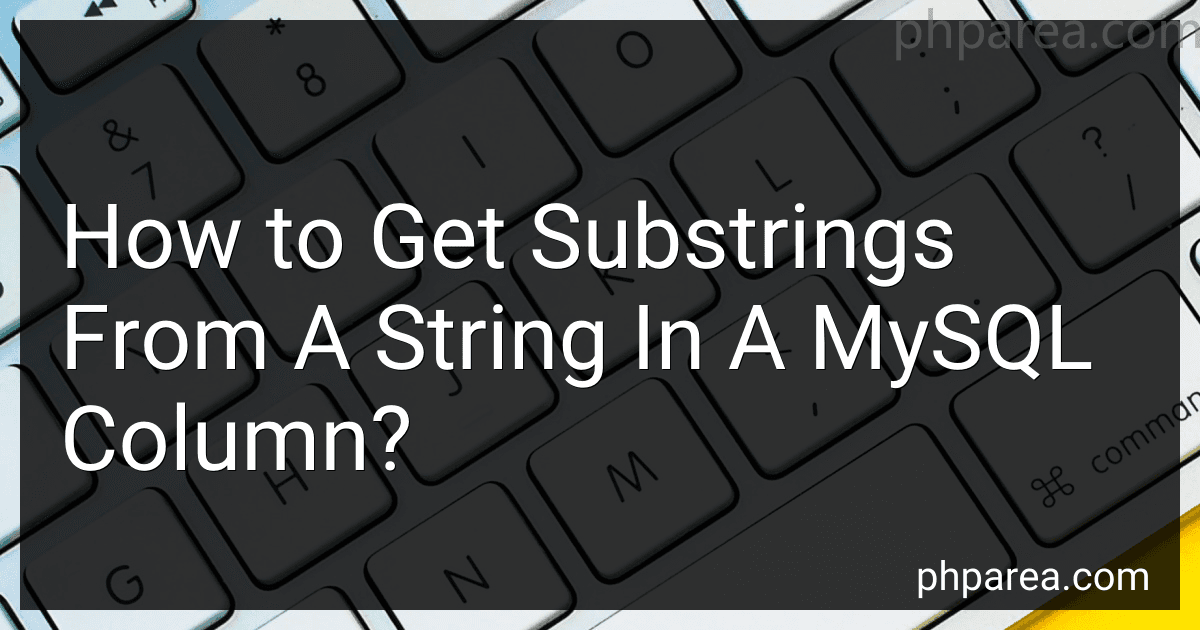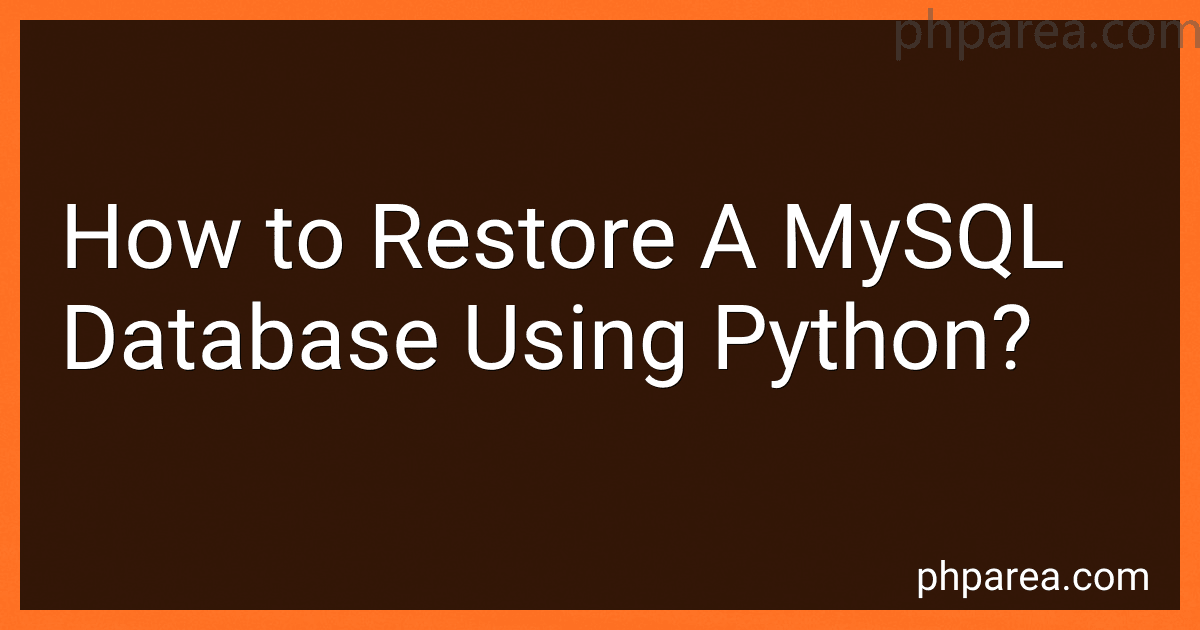Posts (page 123)
-
 9 min readTo customize email notifications in WooCommerce, you can follow these steps:Go to your WordPress admin dashboard and navigate to WooCommerce > Settings.Click on the "Emails" tab.Here, you will find a list of default email notifications that WooCommerce sends. Click on the email you want to customize.You will be directed to the settings page for that specific email notification.Customize the email subject by entering your desired text in the "Subject" field.
9 min readTo customize email notifications in WooCommerce, you can follow these steps:Go to your WordPress admin dashboard and navigate to WooCommerce > Settings.Click on the "Emails" tab.Here, you will find a list of default email notifications that WooCommerce sends. Click on the email you want to customize.You will be directed to the settings page for that specific email notification.Customize the email subject by entering your desired text in the "Subject" field.
-
 4 min readTo get substrings from a string in a MySQL column, you can utilize the built-in function SUBSTRING_INDEX. It allows you to extract parts of the string based on a delimiter.The general syntax of the SUBSTRING_INDEX function is as follows: SUBSTRING_INDEX(str, delimiter, count) Here, str is the string you want to extract substrings from, delimiter is the separator that determines where to split the string, and count specifies the number of occurrences of the separator to consider.
4 min readTo get substrings from a string in a MySQL column, you can utilize the built-in function SUBSTRING_INDEX. It allows you to extract parts of the string based on a delimiter.The general syntax of the SUBSTRING_INDEX function is as follows: SUBSTRING_INDEX(str, delimiter, count) Here, str is the string you want to extract substrings from, delimiter is the separator that determines where to split the string, and count specifies the number of occurrences of the separator to consider.
-
 4 min readTo create a table in Oracle, you need to use the CREATE TABLE statement. This statement allows you to define the table's name and structure, including column names, data types, sizes, and constraints.Here is the syntax for creating a table in Oracle:CREATE TABLE table_name ( column1 datatype(size), column2 datatype(size), column3 datatype(size), ... );Within the CREATE TABLE statement, you need to specify the table name after the keyword CREATE TABLE.
4 min readTo create a table in Oracle, you need to use the CREATE TABLE statement. This statement allows you to define the table's name and structure, including column names, data types, sizes, and constraints.Here is the syntax for creating a table in Oracle:CREATE TABLE table_name ( column1 datatype(size), column2 datatype(size), column3 datatype(size), ... );Within the CREATE TABLE statement, you need to specify the table name after the keyword CREATE TABLE.
-
 7 min readTo integrate Next.js with TypeScript, you need to follow these steps:Create a new Next.js project: Start by setting up a new Next.js project using the following command: npx create-next-app your-app-name Install TypeScript dependencies: Next.js has built-in support for TypeScript. Install the required dependencies by running the following command: npm install --save-dev typescript @types/react @types/node Rename files to TypeScript: Rename your Next.js files from .js to .tsx extension.
7 min readTo integrate Next.js with TypeScript, you need to follow these steps:Create a new Next.js project: Start by setting up a new Next.js project using the following command: npx create-next-app your-app-name Install TypeScript dependencies: Next.js has built-in support for TypeScript. Install the required dependencies by running the following command: npm install --save-dev typescript @types/react @types/node Rename files to TypeScript: Rename your Next.js files from .js to .tsx extension.
-
 10 min readIn WooCommerce, adding and managing product reviews is fairly simple. It allows customers to leave feedback on the products they have purchased, which can help other potential buyers make informed decisions. Here are the steps to add and manage product reviews in WooCommerce:Install and activate WooCommerce: Ensure that the WooCommerce plugin is installed and activated on your WordPress website. This will add the necessary functionality to manage reviews.
10 min readIn WooCommerce, adding and managing product reviews is fairly simple. It allows customers to leave feedback on the products they have purchased, which can help other potential buyers make informed decisions. Here are the steps to add and manage product reviews in WooCommerce:Install and activate WooCommerce: Ensure that the WooCommerce plugin is installed and activated on your WordPress website. This will add the necessary functionality to manage reviews.
-
 7 min readTo restore a MySQL database using Python, you can follow these steps:Import the necessary modules: import mysql.connector from mysql.connector import Error Establish a connection with the MySQL server: try: connection = mysql.connector.
7 min readTo restore a MySQL database using Python, you can follow these steps:Import the necessary modules: import mysql.connector from mysql.connector import Error Establish a connection with the MySQL server: try: connection = mysql.connector.
-
 11 min readTo set up a WooCommerce storefront for digital products, follow these steps:Install WooCommerce: Start by installing the WooCommerce plugin on your WordPress website. Go to the Plugins tab, click on "Add New," search for WooCommerce, and click on "Install Now." Activate the plugin after installation. Configure WooCommerce: After activating WooCommerce, you will be guided through the setup wizard.
11 min readTo set up a WooCommerce storefront for digital products, follow these steps:Install WooCommerce: Start by installing the WooCommerce plugin on your WordPress website. Go to the Plugins tab, click on "Add New," search for WooCommerce, and click on "Install Now." Activate the plugin after installation. Configure WooCommerce: After activating WooCommerce, you will be guided through the setup wizard.
-
 8 min readInstalling Oracle Database on Windows involves a series of steps. Here's a brief overview of the process:Download Oracle Database: Go to the official Oracle website and download the appropriate Oracle Database version for Windows. Extract the downloaded file: Once the download is complete, extract the contents of the downloaded file to a specific directory on your Windows machine. Start the installation: Navigate to the extracted directory and locate the setup.exe file.
8 min readInstalling Oracle Database on Windows involves a series of steps. Here's a brief overview of the process:Download Oracle Database: Go to the official Oracle website and download the appropriate Oracle Database version for Windows. Extract the downloaded file: Once the download is complete, extract the contents of the downloaded file to a specific directory on your Windows machine. Start the installation: Navigate to the extracted directory and locate the setup.exe file.
-
 6 min readTo change the timezone in your SQL query, you can use the following steps:Determine the timezone you want to change to. The timezone should be specified in the standard timezone format, such as 'UTC', 'America/New_York', 'Asia/Tokyo', etc. Identify the specific column or value that needs to be adjusted for the timezone change. Use the appropriate timezone conversion function provided by your database system.
6 min readTo change the timezone in your SQL query, you can use the following steps:Determine the timezone you want to change to. The timezone should be specified in the standard timezone format, such as 'UTC', 'America/New_York', 'Asia/Tokyo', etc. Identify the specific column or value that needs to be adjusted for the timezone change. Use the appropriate timezone conversion function provided by your database system.
-
 16 min readIn Next.js, handling form submissions involves retrieving the data entered by the user in a form and performing actions based on that data. Here's a brief explanation of how to handle form submissions in Next.js:Create a form component: Start by creating a React component that renders the form. Use standard HTML form elements to allow users to input data. Capture form data: In this step, you need to capture the data entered by the user.
16 min readIn Next.js, handling form submissions involves retrieving the data entered by the user in a form and performing actions based on that data. Here's a brief explanation of how to handle form submissions in Next.js:Create a form component: Start by creating a React component that renders the form. Use standard HTML form elements to allow users to input data. Capture form data: In this step, you need to capture the data entered by the user.
-
 6 min readTo add product variations in WooCommerce, such as size and color options, you can follow these steps:Login to your WordPress admin dashboard.Go to the WooCommerce tab in the left menu and click on "Products."Either create a new product or edit an existing one.Under the "Product Data" section, select the "Variable Product" option from the dropdown.After selecting "Variable Product," a new tab called "Variations" will appear.
6 min readTo add product variations in WooCommerce, such as size and color options, you can follow these steps:Login to your WordPress admin dashboard.Go to the WooCommerce tab in the left menu and click on "Products."Either create a new product or edit an existing one.Under the "Product Data" section, select the "Variable Product" option from the dropdown.After selecting "Variable Product," a new tab called "Variations" will appear.
-
 4 min readTo get all the attributes of a column in MySQL, you can use the DESCRIBE or SHOW COLUMNS statement. These statements provide detailed information about the columns in a table. Here's how you can use them:DESCRIBE Statement: The DESCRIBE statement shows the structure of a table, including column names, data types, lengths, and additional attributes.
4 min readTo get all the attributes of a column in MySQL, you can use the DESCRIBE or SHOW COLUMNS statement. These statements provide detailed information about the columns in a table. Here's how you can use them:DESCRIBE Statement: The DESCRIBE statement shows the structure of a table, including column names, data types, lengths, and additional attributes.